You’ve got to hand it to Mazda; while others are leaping into EVs, they’re sticking it out with petrol and diesel engines. That’s not to say that Mazda isn’t investing in EV technology, but they see that the internal-combustion engines are here for quite a while yet.
The SkyActiv-G engine, currently fitted to most Mazdas, is a finely-tuned piece of kit. Everything on this motor has been gone over to the nth degree, to get the maximum out of the design.
But lingering in the background for decades was compression ignition. Used in diesels, it gives numerous benefits over spark-ignition engine that a petrol motor uses. But no one has been able to build a petrol-powered, compression-ignition engine.
Until now.
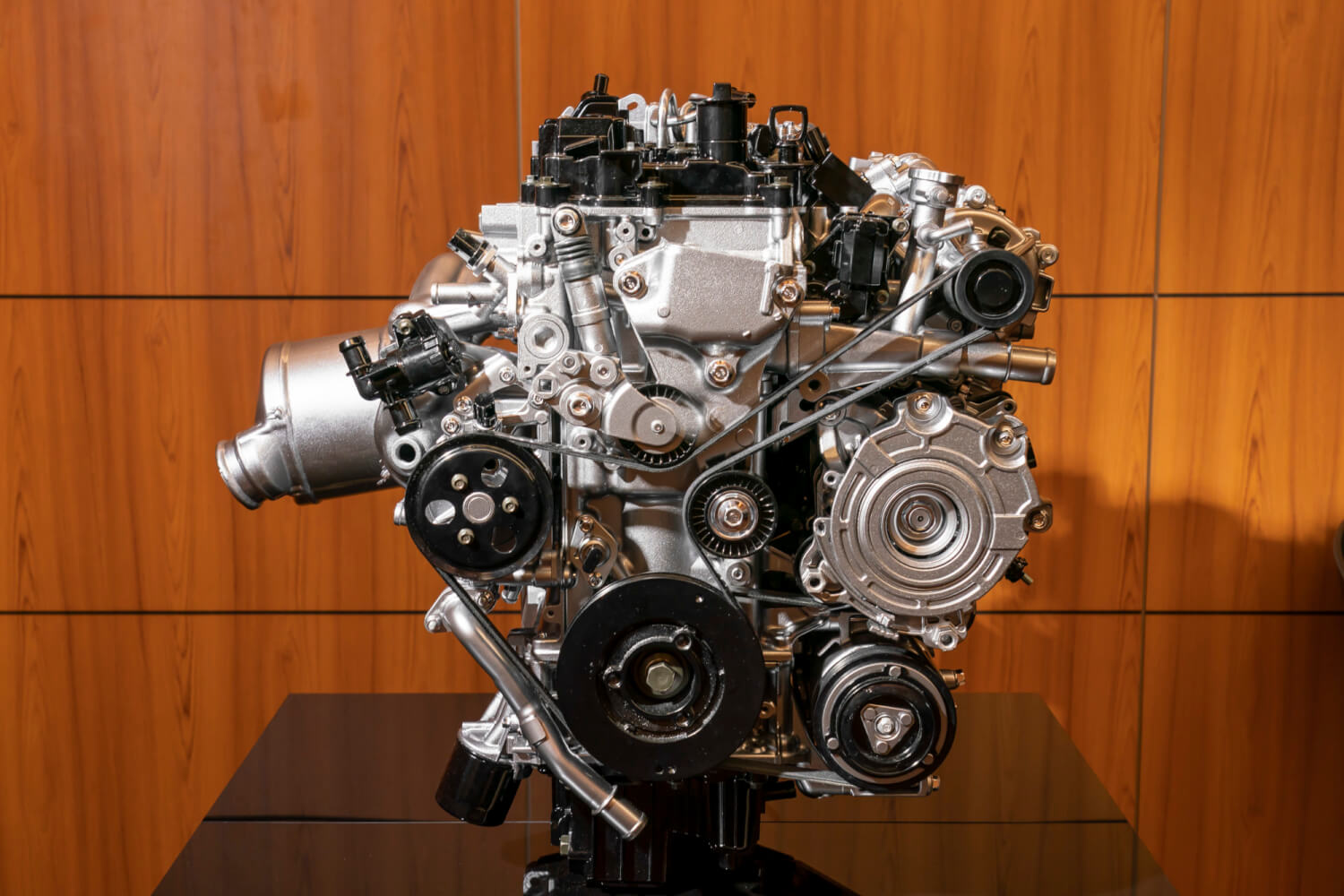
Mazda have conquered the feat, using a few different technologies, most importantly having a mixture of both spark ignition and compression ignition in the same engine, a system that they’ve dubbed Spark Controlled Compression Ignition (SPCCI).
We headed to Auckland to get the low-down on their new engine, named the SkyActiv-X – with the X meaning the crossover from spark ignition to compression ignition.
Right outside Mazda’s headquarters was a 1960s Mazda R360, one of their first ever cars, finished in white with a red roof. It looked diminutive, even next to an MX5. The 380Kg R360 runs a 365cc V-twin engine, and has an output of 12kW of power, and 22Nm of torque. Running either a 4-speed manual ‘box, or two-speed automatic, it has a top speed of 84km/h – pretty good for that little power. The car was on display courtesy of a Mazda fan in Auckland, who has a whole bunch of historic Mazdas, mainly rotaries.
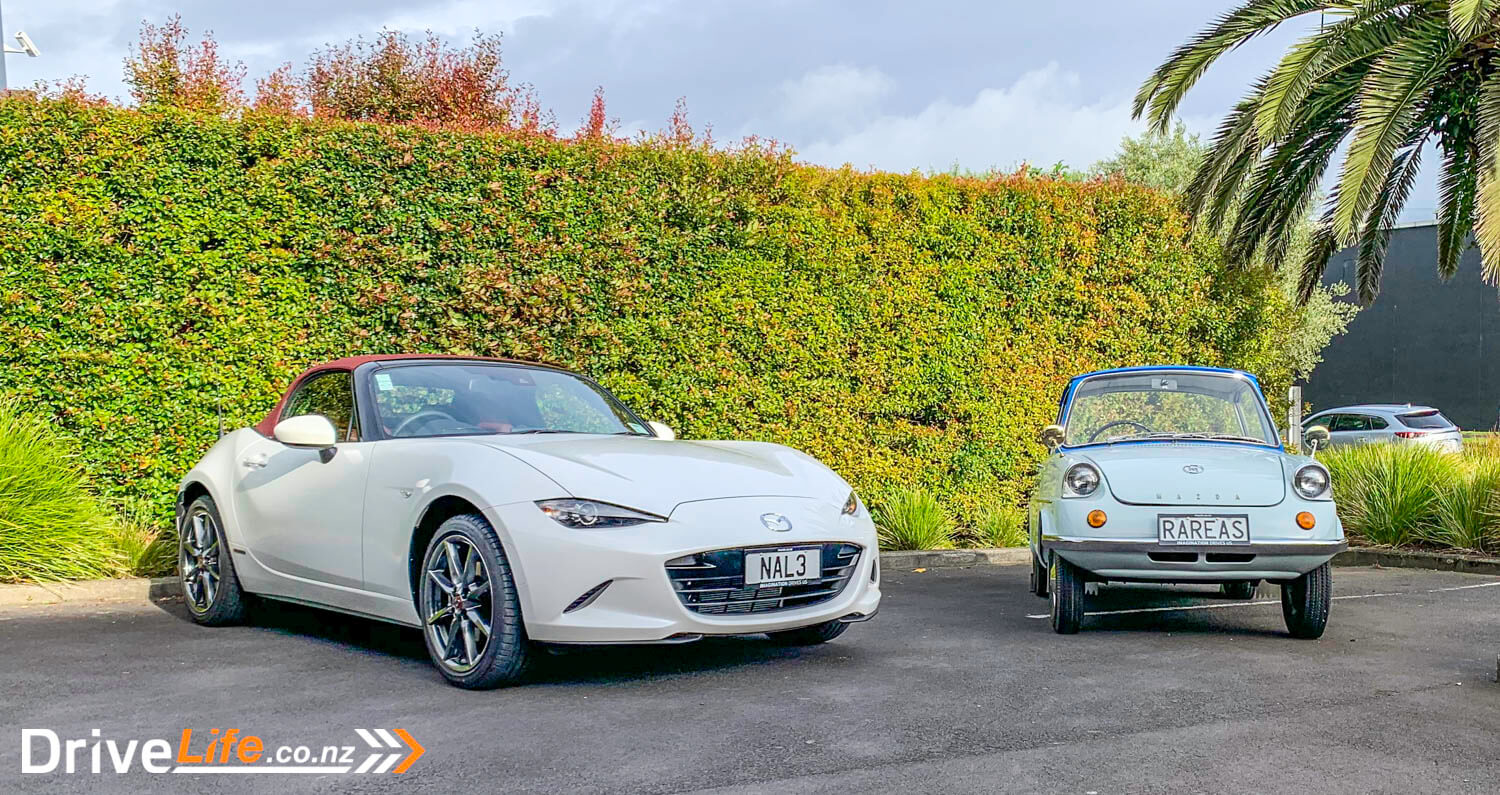
DAVID HODGE, MAZDA NEW ZEALAND MANAGING DIRECTOR
First up, we heard from David Hodge, who claims that he’s not technical and yet this motor blew him away. “When the first cars arrived, I lifted the bonnet and saw a big plastic cover. We took that off, and there it was. I’m not an engine guy, but I looked at it and said it’s a work of art. I’m blown away by it.”
David also covered off some sales stats, mentioning the tough times that all brands are going through. While current sales figures are great, he says, they’re simply the April/May orders coming to fruition. Crunch time is still coming, he says.
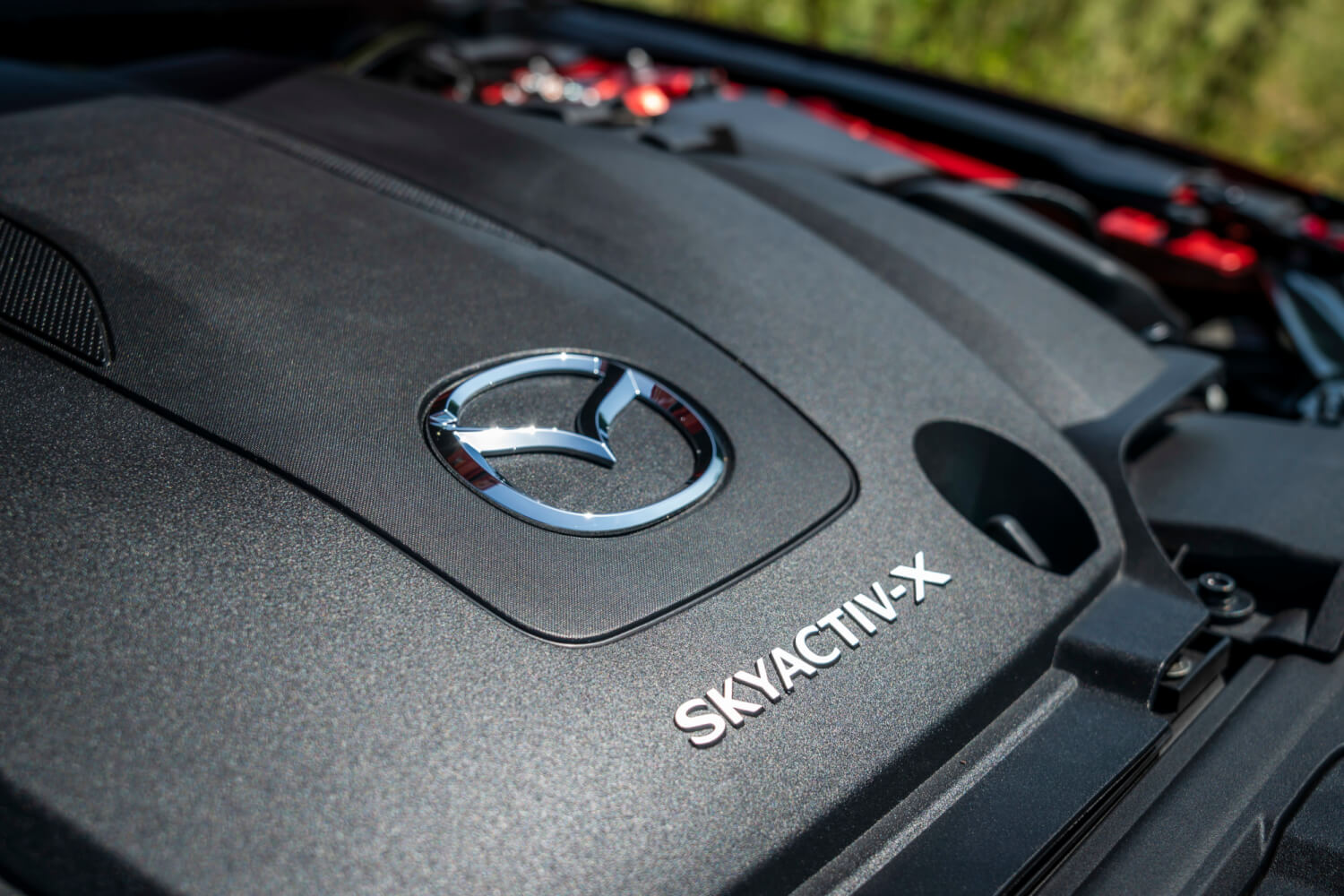
TIM NALDEN, MANAGER PRODUCT & SALES PLANNING
Tim spoke more about the brand, driving home the point that Mazda is all about the passion of driving, getting behind the wheel. Today, he said, is a significant chapter in the history of Mazda, as this is the first time a compression-ignition petrol engine has hit the market.
Everyone has tried to do this, he said, but Mazda has done it, and the Mazda models with this new engine will start arriving in October of this year.
One of the benefits of the new engine is a lean fuel mixture – which means less emissions and a lower fuel consumption. Mazda claims an excellent response and effortless control, a free revving feel, an improvement in Noise/Vibration/Harshness (NVH).
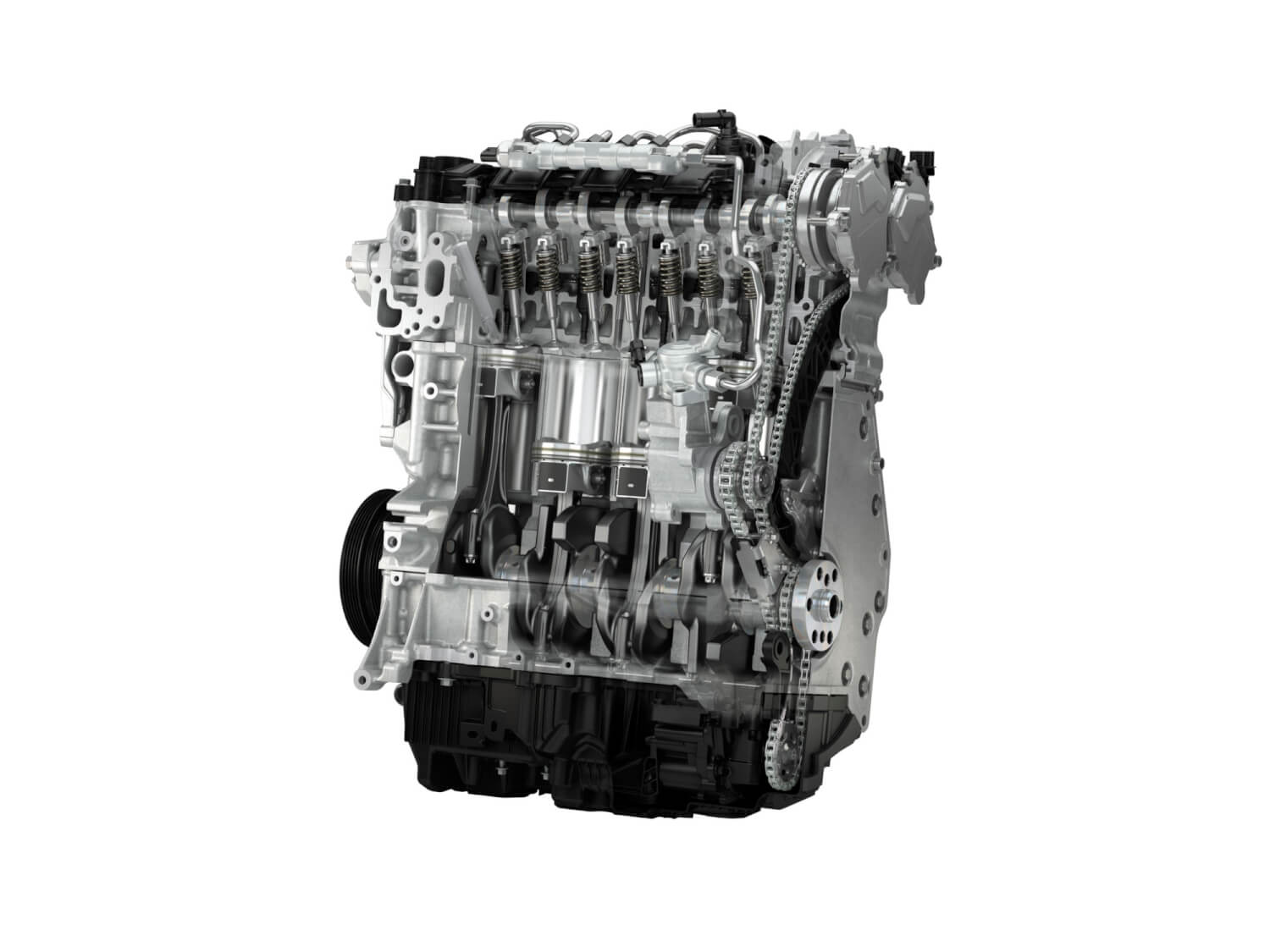
SPCCI is the whole concept here, and it allows the engine to switch seamlessly between conventional spark ignition and compression ignition combustion by using a spark to trigger both types of combustion in different ways.
In SPCCI mode, a split injection process creates separate zones of fuel-air mixture inside the combustion chamber. First, a very lean fuel to air mixture is injected into the combustion chamber during the intake stroke, then a zone of atomised fuel is precisely injected directly around the spark plug during the compression stroke.
The small injection of atomised fuel directly around the spark plug builds a richer core. When the spark fires, it ignites this core of fuel and air. This increases pressure in the combustion chamber to the point where the lean mixture rapidly combusts.
Improvements? Mazda claims a 12% increase in torque around 1,000rpm lower down (224Nm @3,000rpm), 10% lower CO2 emissions and a 10% improvement in fuel economy, but more importantly, a 15-17% increase in fuel economy on the urban test. Mazda claims a combined fuel economy rating of 5.5l/100km, which is excellent for a 2-litre engine.
Skyactiv-X also features the new Mazda M Hybrid system. Compact and efficient, the mild hybrid system features a belt-driven integrated starter generator (ISG) and a 24V lithium-ion battery. It supports greater gains in fuel economy by recycling energy recovered during deceleration and powering the ISG, functioning as an electric motor, to assist the engine.
At the moment, the new engine will only be an option on the CX-30 and Mazda3, and even then, it’s an extra cost option.
| Model Description | RRP 1 2 |
| Mazda3 Takami 2.0L Skyactiv-X 6AT | $51,995 |
| CX-30 Takami AWD 2.0L Skyactiv-X 6AT | $54,990 |
¹Recommended Retail Pricing inclusive of GST, excluding On-Road costs.
²Paint surcharge of $300 (incl. GST) applies for Soul Red Crystal Metallic and Machine Grey Metallic.
The prices above for models fitted with the SkyActiv-X engine range in cost of $3,200-$4,000 over the equivalent SkyActiv-G-equipped model.
There are some extras added to both models, for example both now get a 360-degree camera system, and the CX-30 gets an electric tailgate.
The approach to adopting the new SkyActiv-X engine is part of Mazda’s commitment to reduce CO2 emissions to 50% of 2010 levels by 2030, and a 90% reduction by 2050.
We were told lastly, don’t rely on the figures – it’s all about driving a Mazda with the SkyActiv-X engine that will show us the result of all the technological advances that have gone into this motor. And with that, it was time to leave and get behind the wheel.
THE DRIVE
First up I was in a CX-30 Takami with the SkyActiv-X motor. Straight out of the driveway, the engine is quieter. Engine noise in Mazdas has long been a bit of an issue, both inside the car and out, and I’ve always mentioned it in my reviews. It’s especially evident in Wellington, with so many hills and then the engine loads up. It’s not bad, but others do it much better.
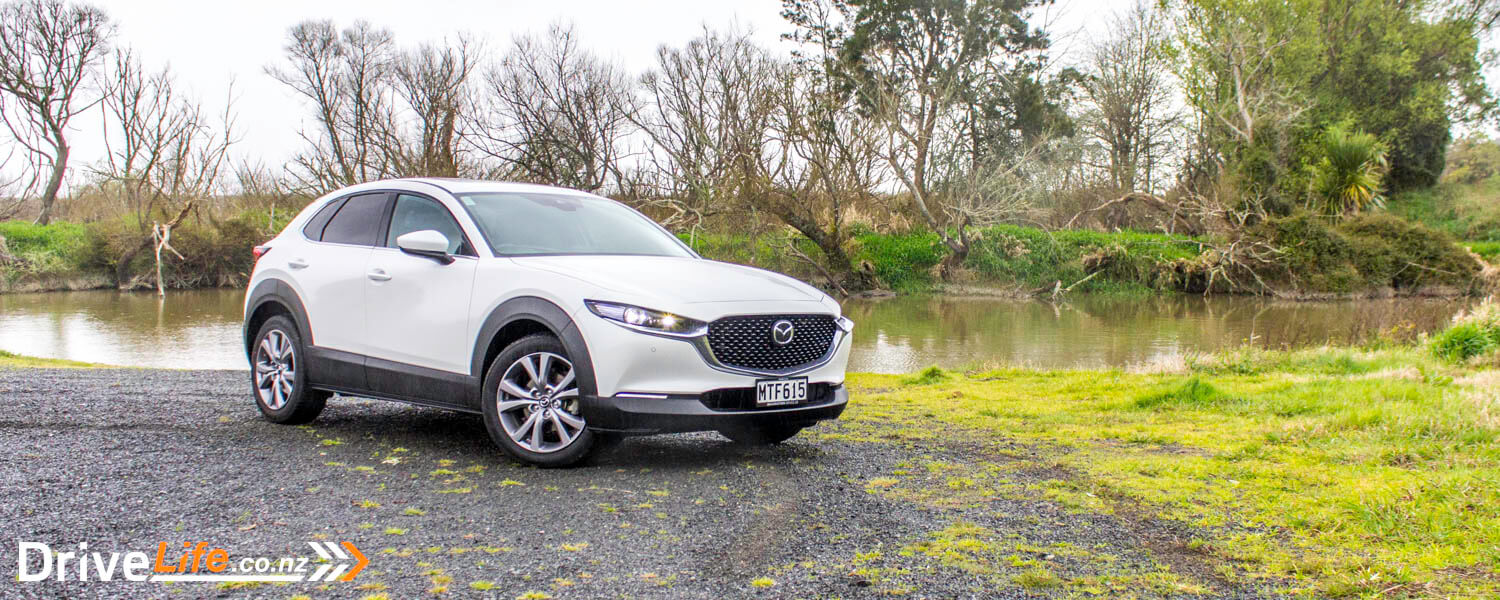
Not so the SkyActiv-X. At any revs, it’s quieter than the existing SkyActiv-G engines. Peppier too, you can feel the punch of this engine as you accelerate away from the lights. It was only minutes before I was on the motorway, settling in with adaptive cruise control on and steering assist active. It’s a lot quieter on the motorway too, with barely a whisper to be heard when the engine isn’t under load. That’s not to say a Mazda with this engine now leads the pack for engine noise, but at last it’s up near top of the class.
As Tim had already mentioned, the car actually runs in SPCCI mode most of the time. The pistons in the infographic change to red when the engine is running in spark ignition, but it felt like only 10% of the time that this happened. The changeover is imperceptible. If you didn’t have this display on, you’d never know.
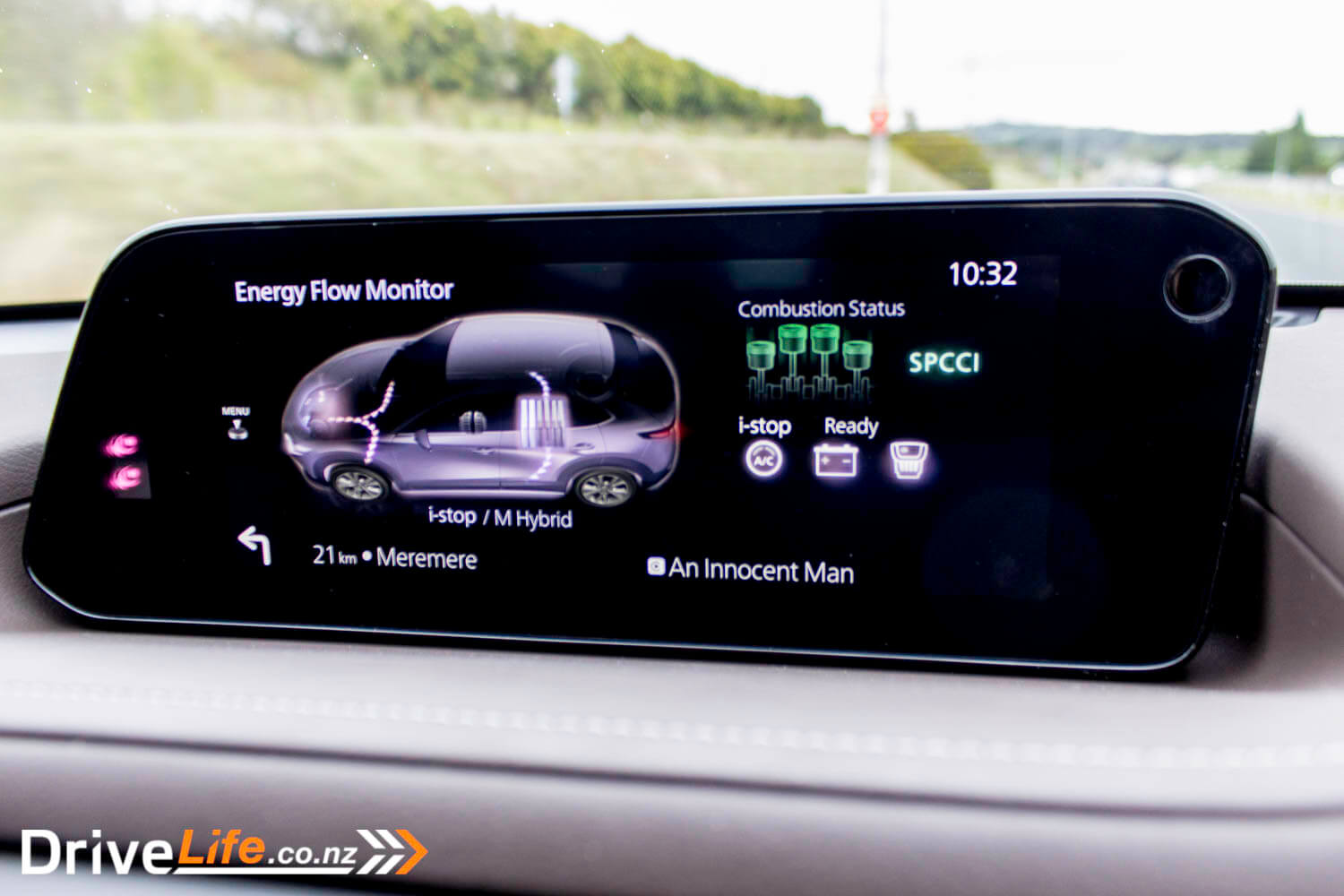
It’s silky smooth as well. We were told there were big gains in NVH, and it shows. This motor is a model of civility, effortlessly cruising down Highway One. Acceleration has improved too; It’s no rocket, and I think the diesel engine would still give it a run for its money, but it’d definitely improved.
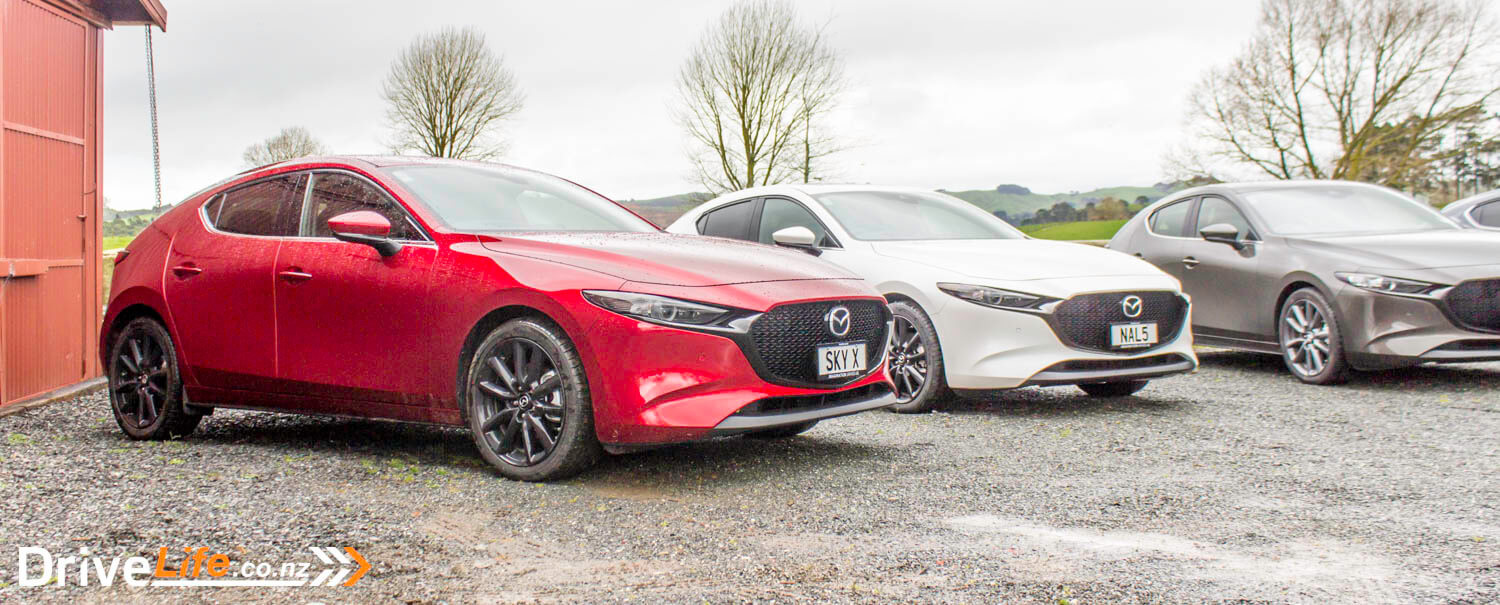
Before too long, it was time for a car change. Ideally I would have been in the SkyActiv-G first, but it didn’t work out that way. So my next car was a CX-30 Takami, with the ‘old’ engine. Instantly, there’s more noise, and the free-revving nature of the newer engine is not there. Back to back, there are marked differences. Another thing I remembered, and nothing to do with the engine, but is the overall handling dynamics of the CX-30 – or really, any Mazda with G-Vectoring Control (GVC). This system transforms the car into a more nimble back-road fun machine. Even with the wet roads, the CX-30 ate up the miles, taking the winding corners on the back roads of Meremere without raising a sweat.
Sometime later, I switched into a grey Mazda3 Takami, SkyActiv-G. This felt the same as the CX-30 – it’s the same engine after all – and as per most Mazdas, the controls are all the same, so not much felt different. It could have felt much different when we hit a thunderstorm on this leg. With front-wheel drive, I was expecting to be a little stressed under the driving conditions. But the 3 did well, and I didn’t actually miss AWD too much. Soon I caught up with an AWD CX-30, and I managed to easily keep pace with him on the wet corners. Not only can the Mazda3 handle, it’s a lot of fun to boot. Like the CX-30, the overall dynamics are what makes this car. And now that it can be specced with a better engine, that just makes it an even more complete all-rounder.
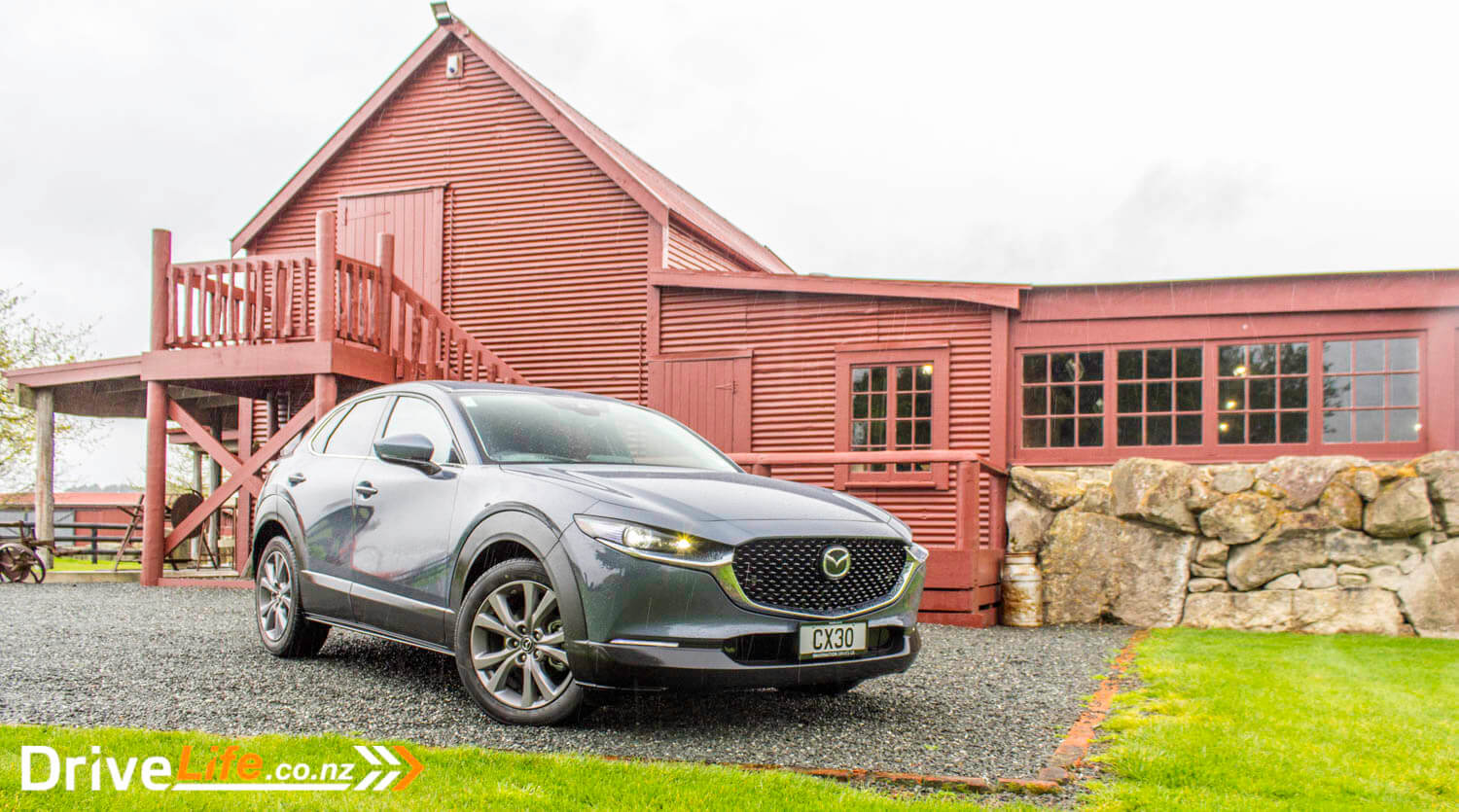
After a stunning lunch at The Red Barn, I had a straight drive through to the airport in a Mazda3 Takami, this time with the SkyActiv-X engine. A bit of a shame though, as it was pretty much a straight run to Highway One, and then staying on Highway One all the way to Auckland. This meant I didn’t get to compare the same model with the different engine on a twisty road, but I know it’s going to be better.
Again, with adaptive cruise on, the Mazda3 settled into its groove and ploughed through the traffic to Auckland, and the airport. A traffic jam on the Southern Motorway brought the i-stop system, now integrated with the M Hybrid system, into play. I must admit, it’s an impressive improvement. After the engine stops in things like a traffic jam, there’s no real feeling of it starting again, as the ISG helps get the car moving while the engine is starting up. It’s all very smooth, and should settle down those people that always turn the engine auto-stop off.
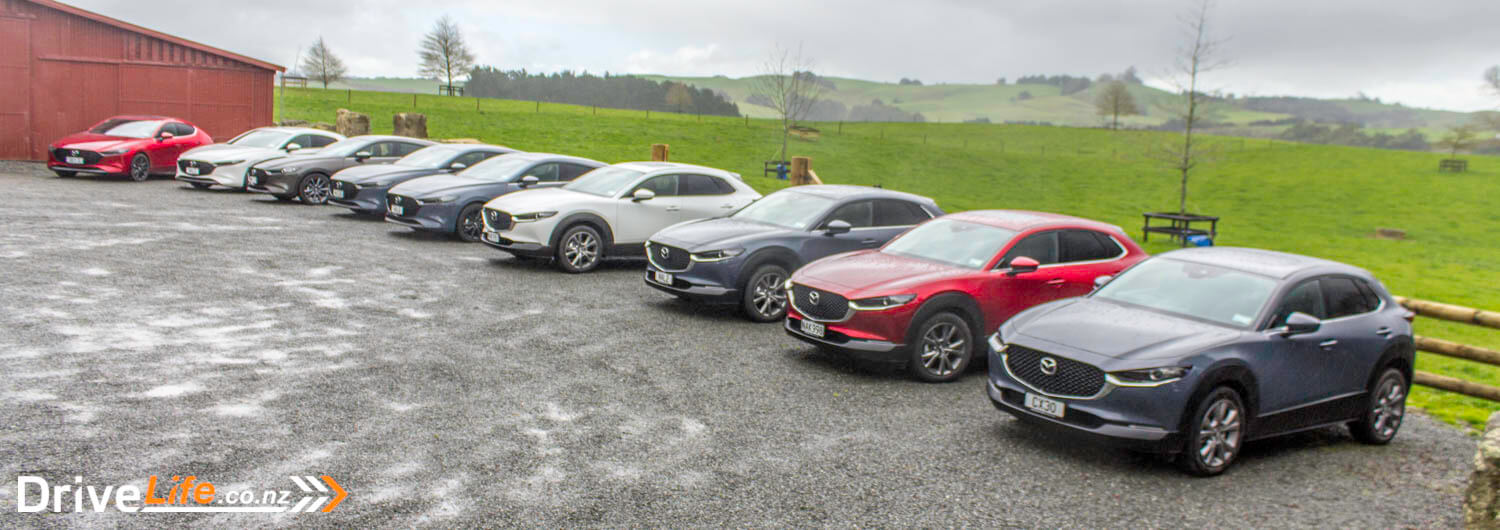
VERDICT
We can say that the new engine is better, there’s no doubt about that. Both models are now dynamically better than they were before. It’ll be nice to get one on test for a week, but it’s a bit of a no-brainer.
For me, if I was looking at a top-spec Mazda3 or CX-30, I’d certainly stump up the extra and go for the new engine. It’s a gem and first impressions are excellent.


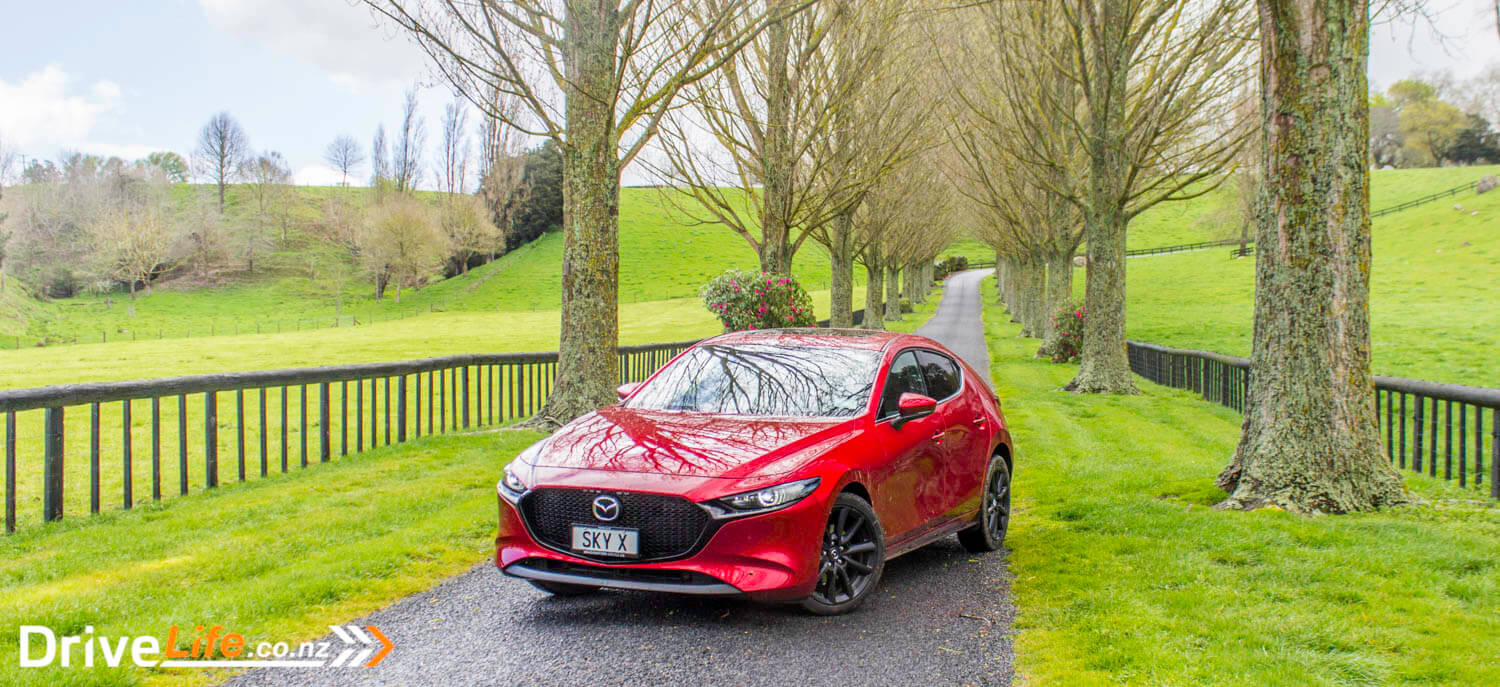











































quite a lot dearer tho than the G ! I got a Mazda3 GTX for 37k (brand new demo) so 51k is a big step up in price (even if it is the Takami)
Hopefully, A BETTER ENGINE THAN THE 2.2 DIESEL IN MY MAZDA 6 WHICH HAD THE OIL LIGHT ON AT 121,000 KMS AND NEEDED NEW INJECTOR SEALS JUST 6000 KMS AFTER A GENERAL RECALL FOR THE PROBLEM WHICH JOHN ANDREWS HENDERSON DID NOT DEEM NECESSARY. MAZDA NZ WAS CHARGED OVER $400 FOR EXPLORATORY WORK. A POOR SHOW ALL ROUND. THE ANDREWS SUPERVISOR TOLD ME MAZDA DIESELS ARE RUBBISH, HE WOULDN’T HAVE ONE AND I’M INCLINED TO AGREE. GOOD NOW IT’S FIXED BUT TO HAVE THAT PROBLEM AT ONLY 121,000KMS IS TERRIBLE.